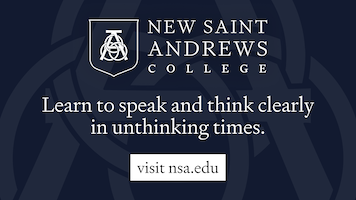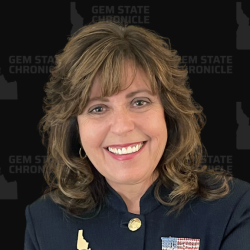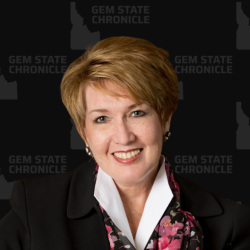There is no such thing as unbiased news coverage. Every reporter, editor, and outlet has a perspective, a worldview, a lens through which they view events. This perspective is reflected not just in what they say about people and events but in what they choose to cover and what they choose to ignore.
Many good reporters do their best to mitigate bias and portray all sides of an issue fairly. I don’t claim to be a great reporter (I don’t claim to be a reporter at all, actually) but I am upfront with my perspective so readers can take it into account as they consider what I have to say. I am not ashamed to say I’m a Christian conservative, and the purpose of my platform is to advocate for policies that reflect those values.
I respect my left-wing counterparts, even though I disagree with them. Everyone has the right to advocate for the policies they believe in. However, I believe that a problem arises when news media with a definite leftward perspective pretend to be unbiased. Case in point, today’s article on the Idaho Child Care Program (ICCP) from the Idaho Capital Sun.
The Idaho Capital Sun is part of the States Newsroom network of nonprofit outlets supported by donations and grants. Though claiming to be nonpartisan, both the Sun and its parent organization have statements of “diversity, equity, inclusion, and justice” that are filled with the usual woke leftist buzzwords:
Media outlets too often reinforce harmful stereotypes and perpetuate forms of discrimination, thereby leaving large parts of the communities they serve excluded or misrepresented. The news industry has long been led by a privileged subset of the population, and the bias and systemic racism that reporters chronicle in their stories often is present in journalism itself. States Newsroom and Idaho Capital Sun commit to do better. We pledge to embody the values of diversity, equity, inclusion and justice, and we ask readers to hold us accountable.
With that in mind, let’s look at how the Sun explained what happened when the ICCP was discovered to be $15 million over budget.
Kyle Pfannenstiel’s initial article on the subject ten days ago was mostly fair, sharing the letter sent by Idaho Dept. of Health and Welfare (DHW) director Alex Adams to the co-chairs of the Joint Finance-Appropriations Committee (JFAC). The reporter solicited comments from Adams as well as JFAC co-chairs Sen. C. Scott Grow and Rep. Wendy Horman and laid out the numbers fairly reasonably.
It is in the follow up article that he moved from reporting to advocacy. The trick to this is to avoid advocating directly for something, rather to quote others who do that for you. The article opens with statements from Kearis Ochs, director of Whole Child Early Education in Rexburg, who explained that 40% of the children in her program are subsidized through ICCP.
She and others worry that new cuts to the program by the Idaho Department of Health and Welfare — which officials say they made to avoid a projected budget shortfall — could compound financial struggles for Idaho child care centers and make it harder for low-income families to access affordable child care.
Whole Child’s prices start at $535 per month for school-age children under 25 hours per week and go up to $795 per month for full-time infants.
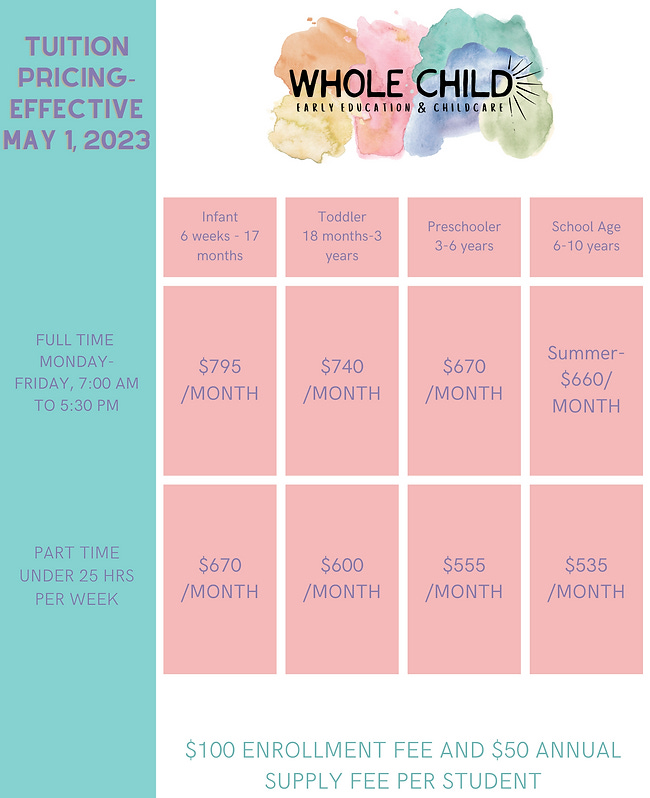
From the article:
Ochs, who owns Rexburg child care centers, said her prices and prices at many nearby centers are already much higher than the Idaho Child Care Program pays. She says that leaves parents to pay the difference — sometimes $200-300 more.
I received this breakdown of ICCP subsidies from DHW. As you can see, reimbursements are different depending on geography, reflecting differing market prices for child care. An infant enrolled in full time care in Rexburg (which is part of Cluster 2 on the map) receives a subsidy of $790, which nearly covers Whole Child’s price of $795. However, an infant enrolled part time receives a subsidy of $488, which is far less than Whole Child’s price of $670.
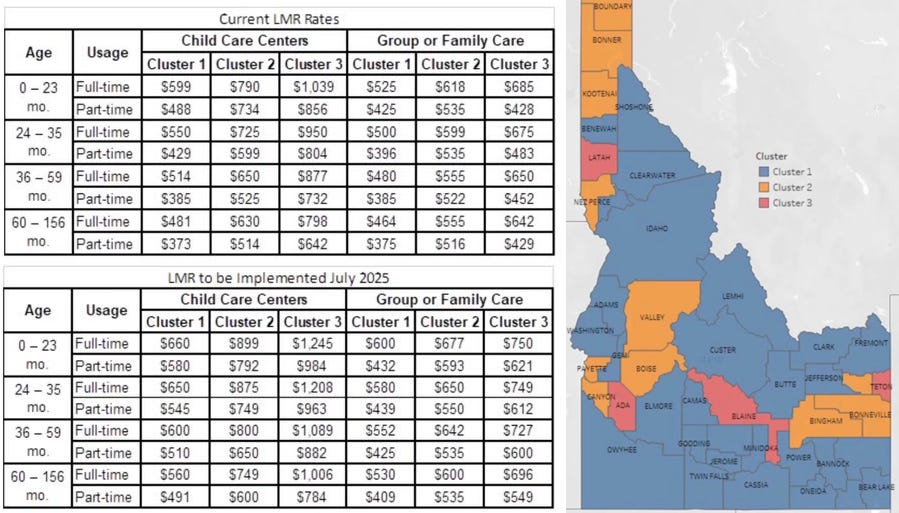
A five year old, having just reached 60 months, is entitled to a subsidy of $630 per month for full time enrollment or $514 for part time. This nearly covers Whole Child’s prices of $670 and $555 per month, respectively.
As you can see in the chart, updating the childcare rates to account for inflation while rolling back reimbursement percentiles to pre-2021 levels means that the subsidies will be increasing next year, though not as much as welfare advocates desire.
Back to the article. It goes on to quote Robert Sanchez, the executive director of the Idaho Association for the Education of Young Children (IAEYC), who says DHW’s planned rollbacks of ICCP eligibility to pre-2021 levels prompted “anxiety and uncertainty”.
Recall that when the Legislature decided not to appropriate a $6 million federal grant to IAEYC after learning about the organization’s leftist bent, bureaucrats at DHW simply went ahead and distributed the money anyway. The Legislature ended up passing the grant with the stipulation that it only be used for programs for school-aged children, but the organization decided it knew best. If Sanchez is worried about anxiety and uncertainty for child care providers, perhaps IAEYC could donate some of its own money.
The Sun article later quotes Emily Allen, policy associate at Idaho Voices for Children (IVC), who called ICCP the “backbone” of Idaho’s child care industry and said DHW “made the wrong changes” to address the budget shortfalls. Leaving aside the inherent structural problem of basing an entire industry on taxpayer subsidies, the entire purpose of Idaho Voices for Children is to advocate for more welfare:
Idaho Voices for Children utilizes research, data and community partners to identify strategies that best support kids. We then mobilize allies from across the state to advocate for smart public policy solutions. Our team pays close attention to the impact of socioeconomic status, race and geography as we seek to remove barriers to opportunity for all of Idaho’s children.
Of course, Allen believes that returning ICCP thresholds to pre-2021 numbers is a bad idea, because welfare is only supposed to increase!
The article links to a 2022 report by Idaho First Steps Alliance (IFSA) which warns of a “child care funding crisis” in Idaho. According to its website, Idaho First Steps Alliance is “A network of child advocates, providers, community leaders, parents and caregivers working to support the unique needs of Idaho’s infants and toddlers and their families through policy advocacy.”
Here is yet another organization with the stated purpose of increasing taxpayer subsidies.
I’m not trying to pick on Kyle Pfannenstiel too much; rather, I’m using his article as an example of how this system of advocacy works. The federal government subsidizes child care through a program administered by DHW. At least three organizations — IAEYC, IVC, and IFSA — advocate for even more subsidies and are dutifully quoted in an article whose purpose is clearly to move readers’ emotions toward supporting these positions.
I sympathize with families who find no other choice besides sending their young children to child care centers. (That was my childhood, and it was often unpleasant.) I also sympathize with child care workers who struggle to make ends meet in the Biden/Harris economy. Yet the answer to every problem is not to throw more taxpayer money at it.
As readers of the Gem State Chronicle recall, the ICCP’s budget overrun resulted from several changes:
- Before 2021, Idaho was paying at a level equal to the 65th percentile of childcare facilities in the state. The federal government recommended setting the level at the 75th percentile, so IDHW submitted a program change to set our level between the 85th and 75th percentiles, depending on certain circumstances. This allowed eligible families to receive more money to use at more expensive facilities.
- The CCDBG program allows states to set copays for participating families; consequently ICCP uses a sliding scale for copays based on family income. In November 2020, ICCP significantly reduced these copays, in some cases by half, which led to increased expenditures.
- Before 2021, the CCDBG program was available to Idaho families living at or below 130% of the federal poverty level. In 2023, IDHW submitted a rule change, approved by the Senate, that raised eligibility to 175%. (It was rejected by the House, but prior to 2024 only one chamber was required to approve administrative rule changes.) This greatly increased the number of families that were eligible for the grant.
- Finally, the department updated childcare rates this year, which have unsurprisingly increased by 25% since the last update. This was the only factor outside the department’s control.
Did the bureaucrats who instituted these changes simply assume that they could ask the Legislature to appropriate more money? Was this a deliberate “wag the dog” situation, where advocacy groups like IAEYC, IVC, IFSA, and the Idaho Capital Sun were ready and waiting with reports and stories of poor families and child care workers who would be negatively impacted if ICCP was forced to live within its means?
“Charitable organizations” used to be those that raised money from generous donors and used it to improve the lives of the people they served. While some still operate this way, most nonprofits today focus on securing government grants and then use their resources to advocate for even more government subsidies in various fields. It seems like many nonprofits now exist primarily to: 1) lobby for increased taxes and subsidies, and 2) provide jobs for political activists.
Being an informed citizen and savvy voter means recognizing the difference between reporting and advocacy. You must pay attention to when outlets are manipulating your emotions to achieve a desired goal. Learn to take things with a grain of salt, and dig deeper to find out where reporters and the people they quote are coming from.
Everyone wants your money. Keep your hand on your wallet and your eyes open.
Thank you all for your support as I continue to bring you news and analysis that empowers you to make positive change in Idaho. Make sure to subscribe, follow me on Twitter, and follow the Chronicle on Facebook, Telegram, YouTube, and Rumble.
About Brian Almon
Brian Almon is the Editor of the Gem State Chronicle. He also serves as Chairman of the District 14 Republican Party and is a trustee of the Eagle Public Library Board. He lives with his wife and five children in Eagle.








